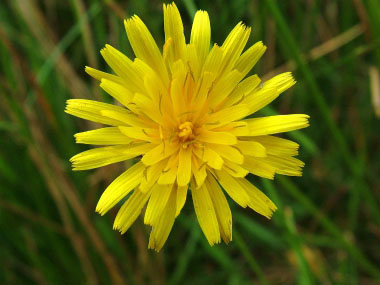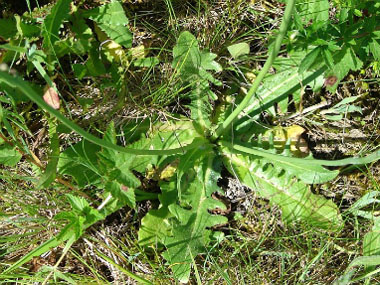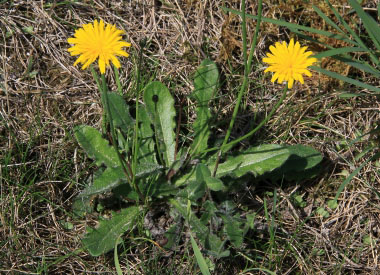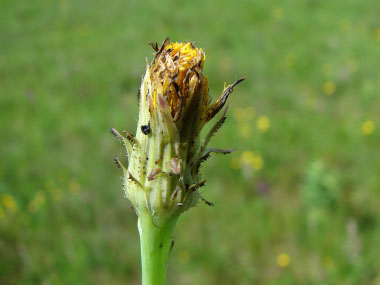






To support our efforts please browse our store (books with health benefits, etc.).
Catsear is an herbaceous perennial originally native to Morocco. It is a very successful colonizing species that is now present on all continents except Antarctica. It is a plant in which the flower resembles other plants. Catsear is in the Asteraceae family.
Distinguishing Features
Common catsear is a perennial with a growth form similar to that of dandelion; its leaves form a basal rosette and it produces yellow head-like flowers at the tips of upright stems. Leaves of common catsear are typically lance-shaped with irregular rounded lobes and hairs on both the upper and lower surfaces. Emerging from the rosette are wiry hairless stems that usually have leaf-like bracts and branches. At the tips of the branches is a flower head composed of many tubular, yellow flowers.
Flowers
A single, dandelion-like flower head is produced at the end of each branch. The yellow flower heads are flat and 2 to 4 cm in diametre. Each flower head is composed of many individual petal-like flowers.
 Fields
of Nutrition has medicinal benefits and vitamin/mineral content of Catsear.
Fields
of Nutrition has medicinal benefits and vitamin/mineral content of Catsear.
Leaves
The first leaves (cotyledons) are club-shaped, with a round apex, and hairless. The mature leaves grow to 15 to 20cm long. The leaves are arranged in a basal rosette and are hairy with toothed or irregularly lobed margins. The basal leaves are obovate in shape and are 5 to 20cm long and 10 to 40mm wide with toothed margins that are deeply wavy. The basal leaves are also densely hairy, rarely without hairs, and are sessile. The upper leaves if present are similar and reduced in size as they go up the stem. Leaves emit a milky sap when broken.
Height
Stems are 20 to 40 cm tall, stiff, wiry, smooth, and often branched.
Habitat
It is found most commonly in cooler to temperate areas of many countries. Often found in drier areas as its deep taproot tends to give it drought resistance. It tolerates a wide range in soil types, texture and pH. Grows mainly on sandy to sandy clay loam red and red brown earths; also on shallow stony soils of hillsides, less frequent on grey clay soils. It does not however tolerate poorly drained soils. It is most often found in pastures, cultivation, lawns, disturbed areas, roadsides and waste places.
Edible Parts
Young leaves are edible either fresh or cooked.
Other Name
Flatweed.
Similar Plants
Winter Survival Food Handbook

PDF Plant Magazines
Types of Wild Food
Geographic Zones Seasons
Disclaimer
EdibleWildFood.com is informational in nature. While we strive to be 100% accurate, it is solely up to the reader to ensure proper plant identification. Some wild plants are poisonous or can have serious adverse health effects.
We are not health professionals, medical doctors, nor are we nutritionists. It is up to the reader to verify nutritional information and health benefits with qualified professionals for all edible plants listed in this web site. Please click here for more information.
Why Edible Wild Food?
- Food costs are rising
- Free, wild food is readily abundant
- Wild food adds nutrition to your diet
- Wild food can help treat various medical conditions





